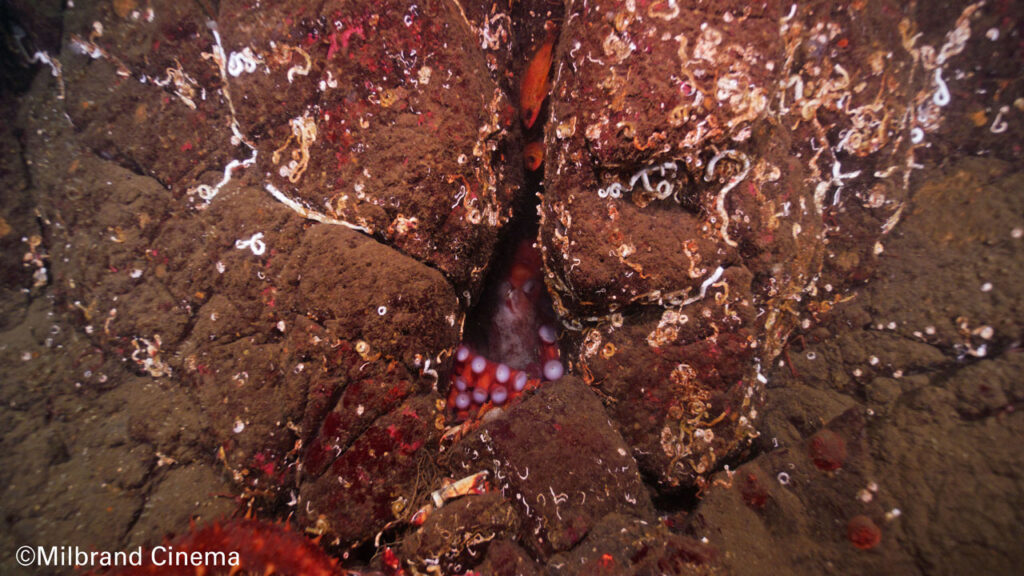The sunflower sea star, Pycnopodia helianthoides is an endangered species. It’s the largest and fastest “starfish” in the world. Wait, science no longer calls any species a starfish, because they are not fish, hence, they are now called sea stars. Sunflower sea stars were once common along the central and northern Eastern Pacific, but a withering disease attacked most of the sea star family, and the sunflower was hit hard. They could be extinct in California. It’s unknown how the disease spreads or how to cure an infected animal, but scientists are trying to restore their populations.
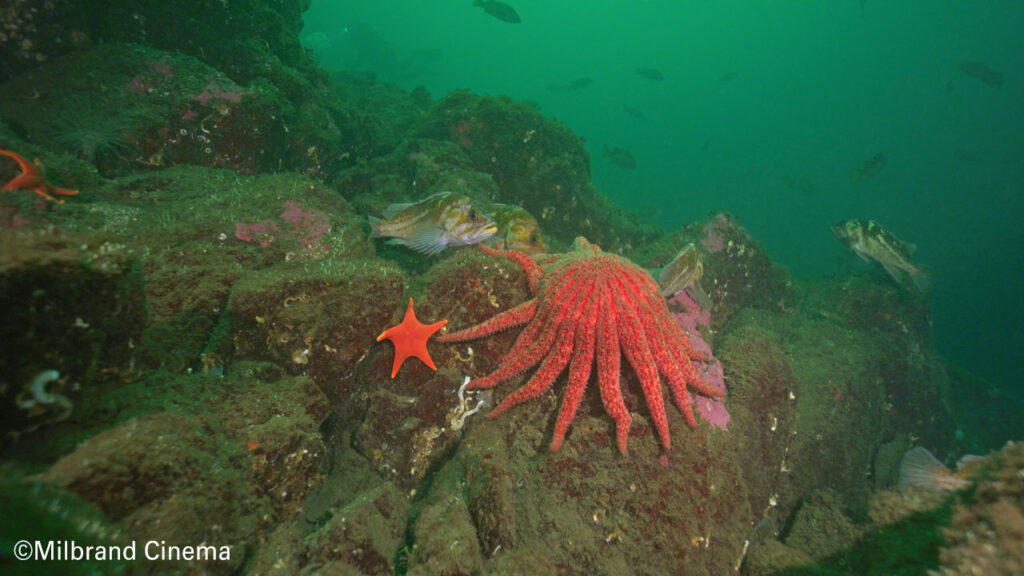
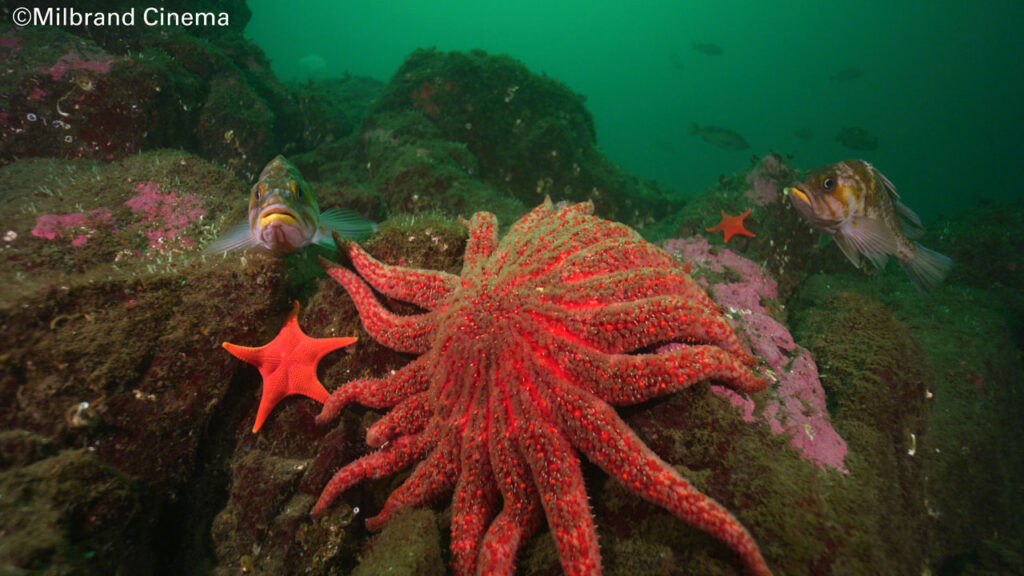
6K footage was captured of a very rare event when a hungry Sunflower attempted to eat a large group of giant red sea cucumbers, Parastichopus californicus, but the sea cucumbers proved to be a crafty adversary, and all 12 of them escaped predation.

Have you ever eaten fish and chips? Chances are good that you’ve eaten a rockfish. Within Washington State’s Hood Canal, a moratorium was placed on their fishing and today, their numbers are rebounding. The copper rockfish, Sebastes caurinus, live amongst the nooks and crannies of the sea floor. They are near threatened and a species of greatest conservation need. The tall, branchy looking trees in the background are animals that are filter feeders, called Metridium, or plumose anemones.

This bright red fish is a gravid (pregnant) vermillion rockfish, Sebastes miniatus. Vermillion rockfish are one of the few ocean species that give live birth, it’s called (viviparous), meaning live bearing. Miniature versions of vermillion are left to swim with the tides and fend for themselves.
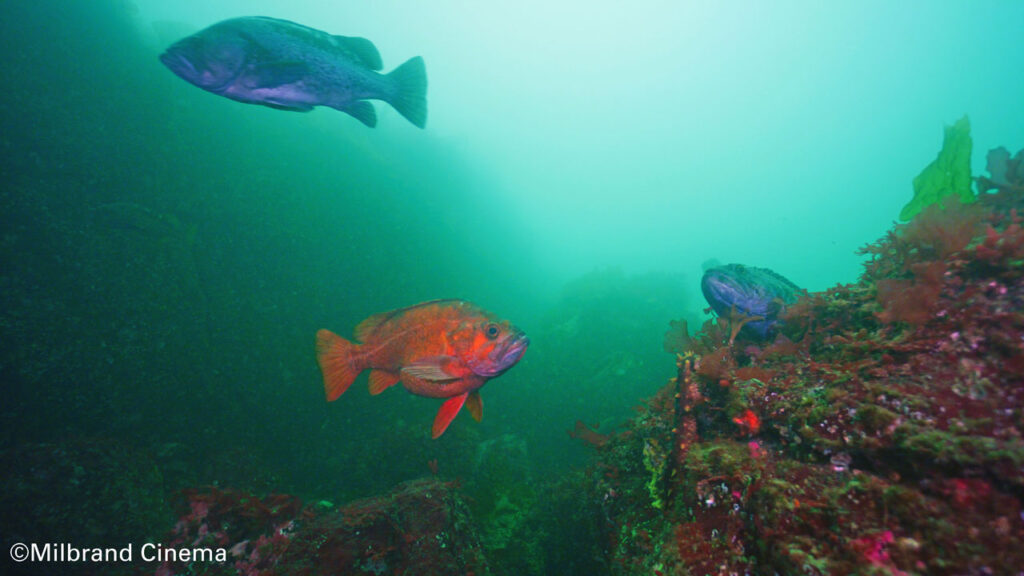
Wolf eels, Anarrhichthys ocellatus, are a species of fish that mate for life. They set up a home under a rock ledge or cave and attempt to protect it from Giant Pacific Octopus, who also prefers that habitat. Although they are shaped like eels and have large, pointed teeth, they are not true eels, they are part of the wolf fish family. The female lays an eggs mass and both parents guard the nest, day and night. I could not see the eggs without disturbing the fish, and that is fine by me. Animals should not be harassed to get the shot.
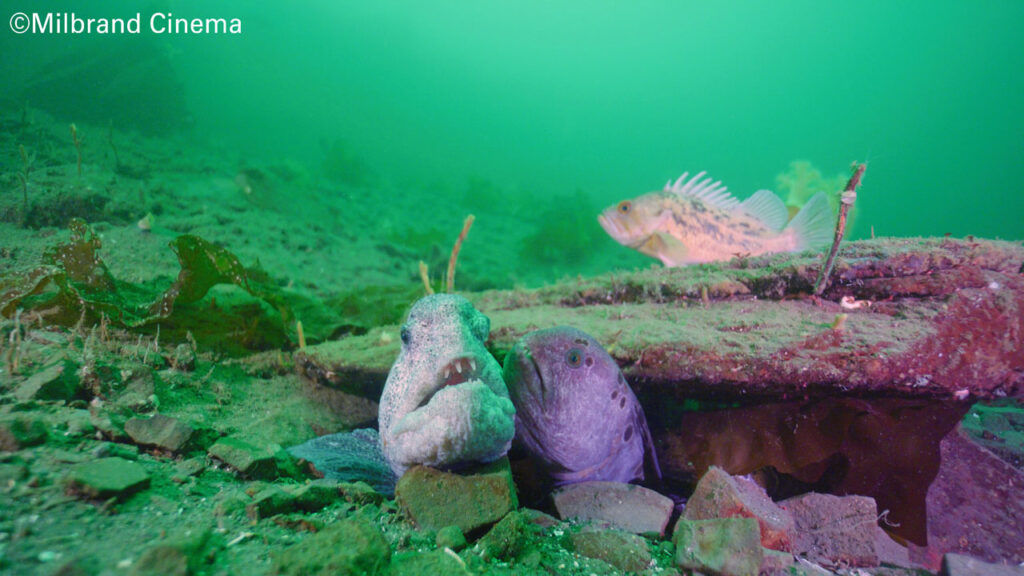
This pair shared its underwater ledge with a copper rockfish, Sebastes caurinus and the three of them could be seen together over a period of many trips to see them.
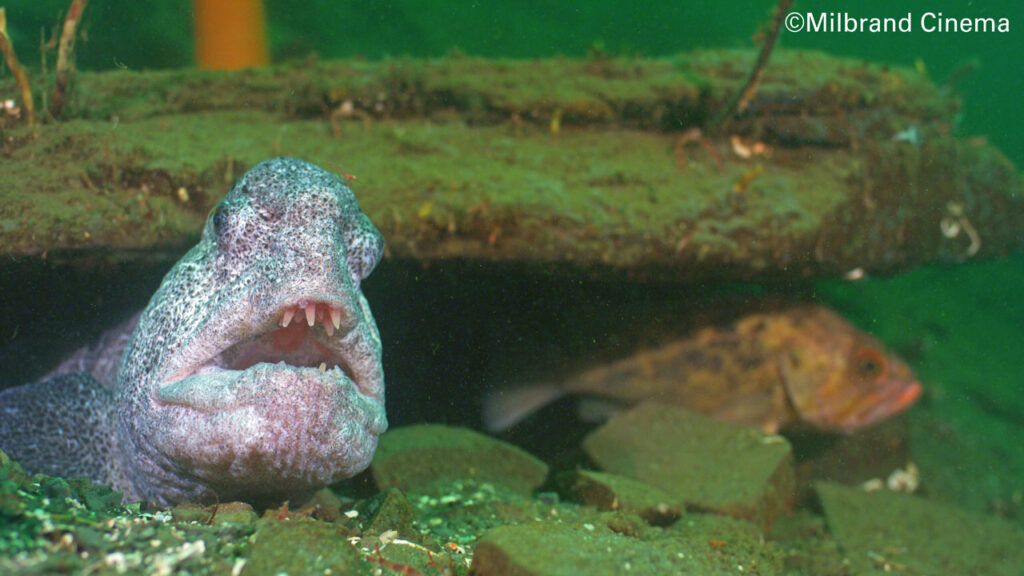
Possibly the rockfish would feed upon the tiny wolf eels as they emerge from their eggs, but I did not witness that activity.
At a chilly 47 degrees, I’m 85-feet below the surface, hanging out with friends.
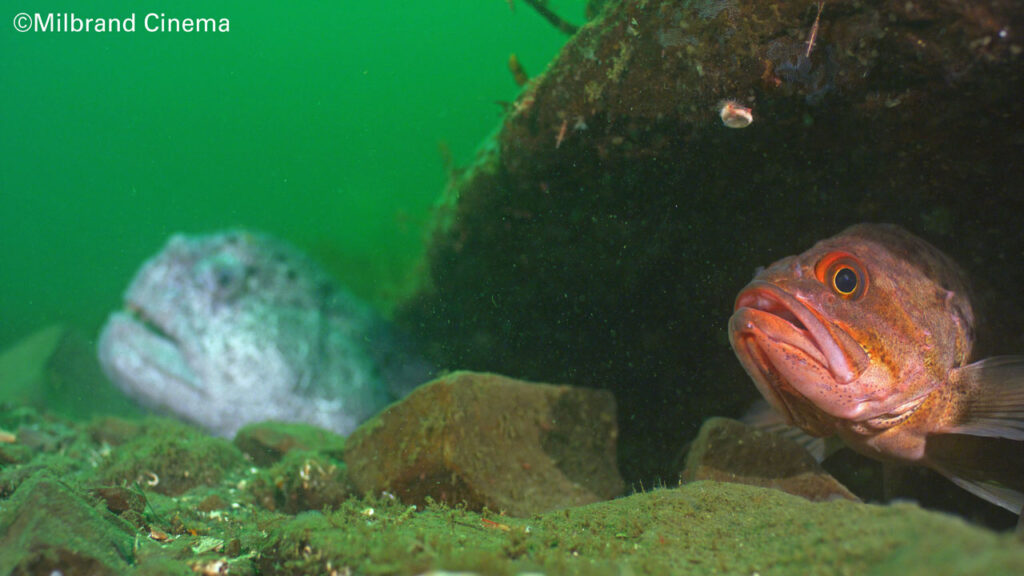
The free-swimming wolf eel below is a different fish from the nesting pair above. Only he knows why he decided to bite a rock for the camera. After, he bit the rock, he swam off into the deep, I’m guessing to look for something good to eat.

The Giant Pacific Octopus, Enteroctopus dofleini is a both a predator when they are adults and large, and a prey when they are small and young. They normally come out to hunt during the night and it’s a rare day to see one out in the open, hunting during the daylight.
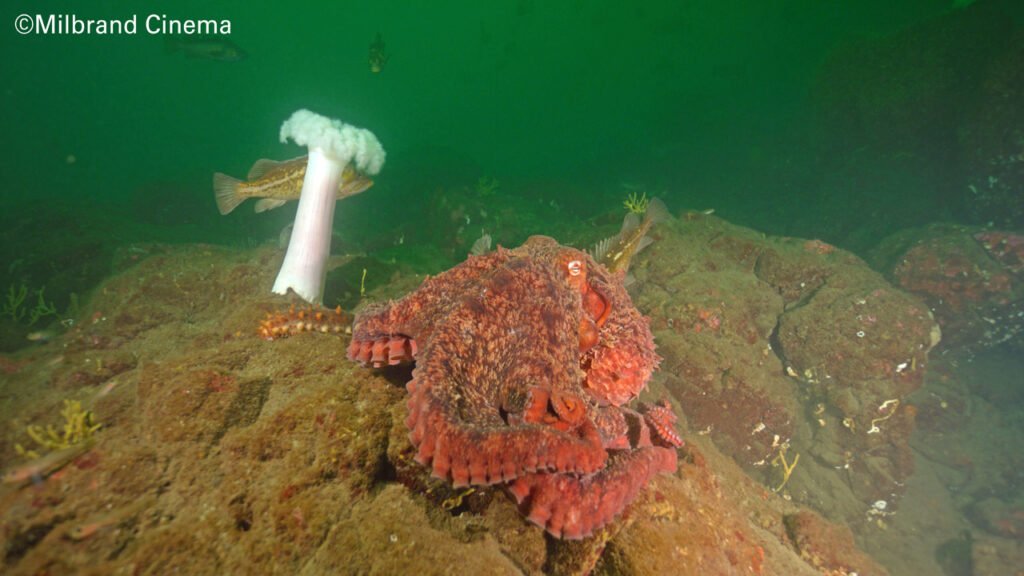

The females are much larger than males. Near the end of her life, she will choose a crack within the rocks to lay her eggs. Within her den, she will tend to her offsprings needs and guard them with her life. During her maternity watch, she will stop eating until she eventually starves herself and dies.
I got lucky with this large female; we were both curious and respectful of one another. Historical accounts refer to large octopus as the Kraken, a horrible sea monster, but to me, on this day, she was a charismatic megafauna, something to be remembered, cherished and maybe even famous in the next blockbuster octopus movie.
